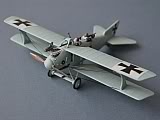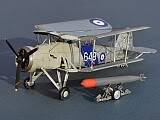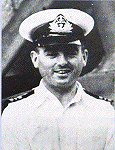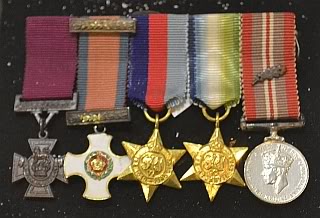![]()
![]() Selected
WW2 70th Anniversaries this month:
Selected
WW2 70th Anniversaries this month:
Between
2009 and 2015, I will be pursuing a general modelling theme that
marks selected 70th Anniversaries from WW2.
11 Feb 1942 - The Channel Dash - Operation Cerberus sees the battleships Scharnhorst and Gneisenau, together with the heavy cruiser Prinz Eugen, make a daring transit through the English Channel from Brest to their home ports in Germany. Combined attacks by the RN, Army Shore batteries and RAF Coastal Command fail to inflict more than minimal damage to the German ships. The final resort are six Swordfish aircraft from 825 Sqn Fleet Air Arm, launched from a snow-bound RAF Manston. Knowing that they will not survive and that most of their RAF fighter escort has not turned up, they continue the attack regardless, managing to launch at least 2 torpedoes. All of the aircraft are destroyed by the fighters of the Luftwaffe and the guns of the German Navy.
The official German War Diary for Operation Cerberus describes the Swordfish attack as: ".... [a] mothball attack of a handful of ancient planes piloted by men whose bravery surpasses any other action by either side that day".
Citation for Victoria Cross published in the London Gazette, March 1942:
|
On the morning of Thursday, 12th February, 1942, Lieutenant-Commander Esmonde, in command of a Squadron of the Fleet Air Arm, was told that the German Battle-Cruisers SCHARNHORST and GNEISENAU and the Cruiser PRINZ EUGEN, strongly escorted by some thirty surface craft, were entering the Straits of Dover, and that his Squadron must attack before they reached the sand-banks North East of Calais. Lieutenant-Commander Esmonde knew well that his enterprise was desperate. Soon after noon he and his squadron of six Swordfish set course for the Enemy, and after ten minutes flight were attacked by a strong force of Enemy fighters. Touch was lost with his fighter escort; and in the action which followed all his aircraft were damaged. He flew on, cool and resolute, serenely challenging hopeless odds, to encounter the deadly fire of the Battle-Cruisers and their Escort, which shattered the port wing of his aircraft. Undismayed, he led his Squadron on, straight through this inferno of fire, in steady flight towards their target. Almost at once he was shot down; but his Squadron went on to launch a gallant attack, in which at least one torpedo is believed to have struck the German Battle-Cruisers, and from which not one of the six aircraft returned. His high courage and splendid resolution will live in the traditions of the Royal Navy, and remain for many generations a fine and stirring memory. |
Esmonde's Medals, including the VC, DSO (for his part in the attack on the Bismark - he only received this medal the day before he died), 1939-1945 Star, Atlantic Star, 1939-1945 War Medal (with Oak Clasp - Mentioned in Despatches for his actions during the sinking of HMS ARK ROYAL) |
15 Feb - Singapore surrenders to Japanese forces.
19 Feb - Japanese aircraft attack Darwin, Australia.
27 Feb - During the Battle of the Java Sea, Allied Naval forces under the command of the Dutch Admiral Karel Doorman are defeated by the Imperial Japanese Navy, leaving the way clear for the Japanese occupation of Java.
820 Naval Air Squadron, Fleet Air Arm, RAF North Coates / HMS COURAGEOUS, March 1939
Airfix, 1/72.
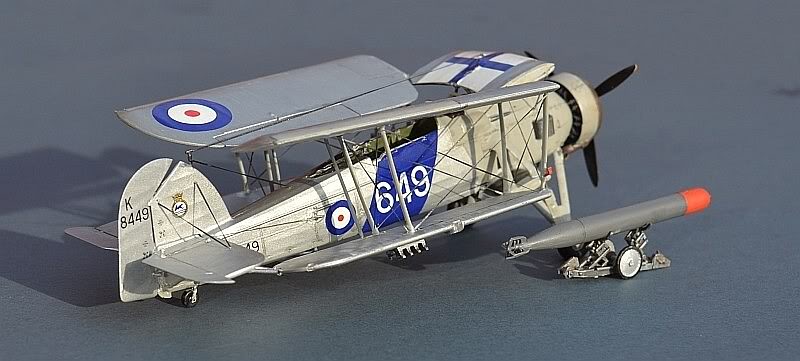
Slow and agricultural in appearance, the Fairey Swordfish was an immensely robust and stable weapons platform that saw the RN through WW2, outlasting its replacement (the Albacore) and fighting with distinction in every theatre of the war. Easy to fly, perfectly tuned to carrier operations and powered by the faithful and trustworthy Bristol Pegasus engine, it made a significant contribution to the war effort.
The aircraft represented by this model flew with 820 Sqn from HMS COURAGEOUS and from ashore at RAF North Coates, until the squadron was re-assigned to HMS ARK ROYAL at the end of 1939.
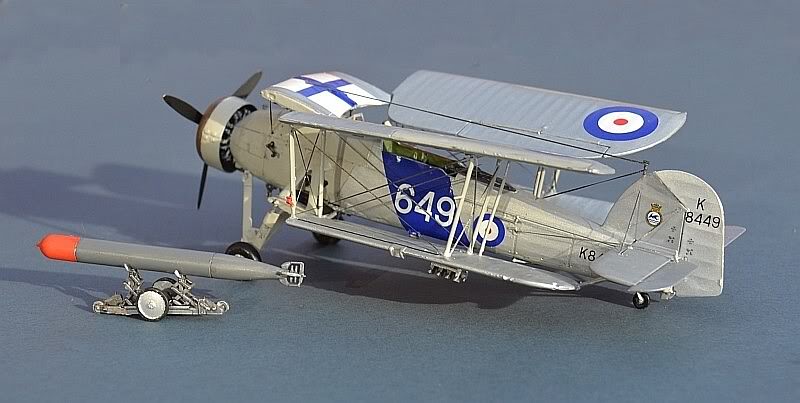
Since this month marks the 70th Anniversary of the Channel Dash, what else would I build, but a Swordfish. The colour scheme and markings applied to the 825 Sqn aircraft that took part in the doomed attempts to stop the German breakout are the subject of much controversy, even more so than is normal for WW2 Fleet Air Arm aircraft, and in any event would almost certainly be very similar to the Taranto Swordfish I built back in 2010.
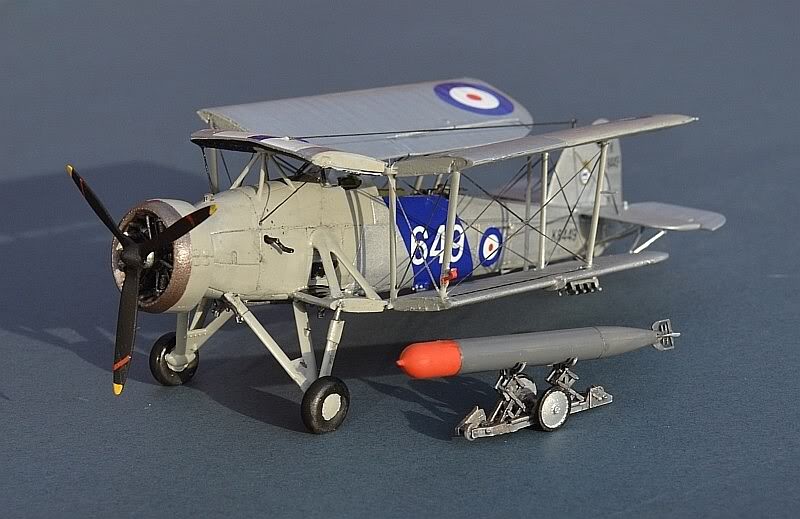
I have therefore built this one out the box as a pre-war aircraft from HMS COURAGEOUS, noting that the leader of the Channel Dash Attack, Lt Cdr Eugene Esmonde VC DSO RN was a survivor of the sinking of COURAGEOUS in September 1939 (and ARK ROYAL in November 1941, as well as leading the initial attack on the BISMARK in May 1941).
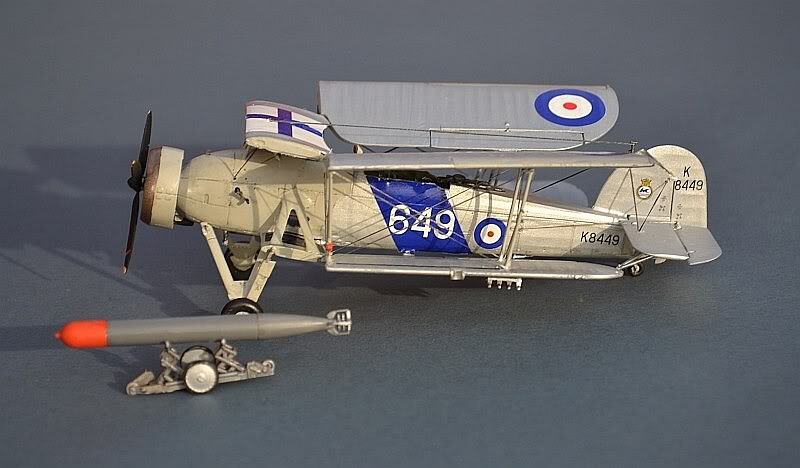
Airfix have truly surpassed themselves with their latest Swordfish kit. Detailed, accurate, finely and sharply moulded and with well engineered "buildability", this is one of two that Mrs T bought me for Xmas - it went together with little drama - the cockpit assembly requires a little care, the cowling needs a smidgeon of filler and I ended up with a small gap under the fuselage sides (probably not enough care in the cockpit). Decals / transfers are good if a little thick - I struggled to get the "Naval Numeral 2" flag on the upper centre wing section to conform with the surface shape despite using copious amounts of Kleer to settle it down.
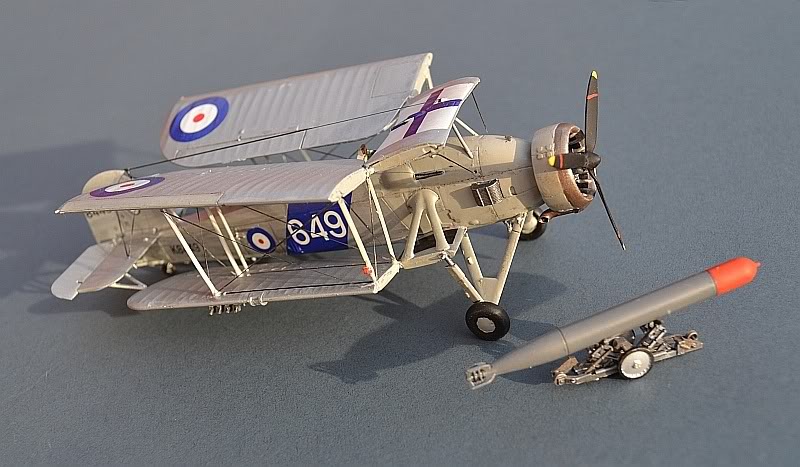
I'm not sure that the wing fold option is the best way to display this kit - not least because it makes lots of the superb detail a little hard to see, but no problem;I have enjoyed building this one so much that I suspect there will be many more "spread" ones to come!
More Swordfish on my RN Props pages
Royal Bavarian Air Service / Imperial German Air Service 1916
Airfix, 1/72.
The LFG Roland C.11 design was the first of a range of advanced German Aircraft introduced from 1916. Its streamlined wooden monocoque fuselage, assembled from moulded and cross planked plywood sheets, gave it a comparatively high speed and earned it the nickname "Walfisch" (whale). However, a poor understanding of aerodynamic principles meant that the closely mounted biplane wings were prone to sudden stalls.
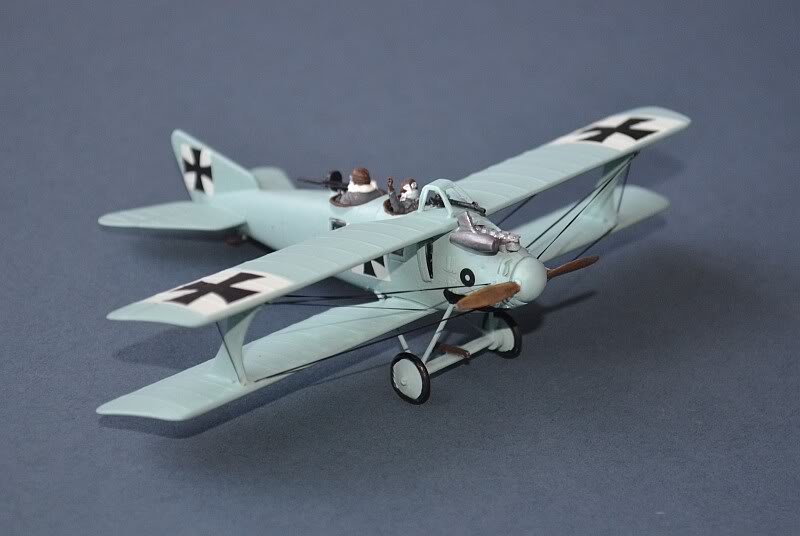
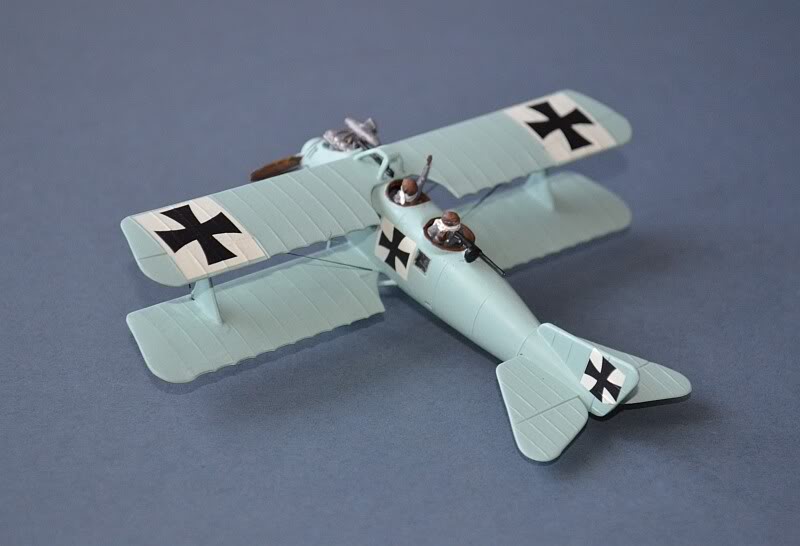
This aircraft was the mount of Eduard Ritter von Schleich, a high scoring Bavarian flying ace of World War I. He was credited with 35 aerial victories and a recipient of the "Order Pour le Mérite" (sometimes known as the "Blue Max"), the Kingdom of Prussia's highest military award.
IN the run-up to WW2, von Sleich was one of the founders of the rebuilt Luftwaffe, eventually becoming Commander of the Nazi Occupation Forces in Denmark from mid 1941 until 1944, then Luftwaffe Ground Forces Commander in Norway.
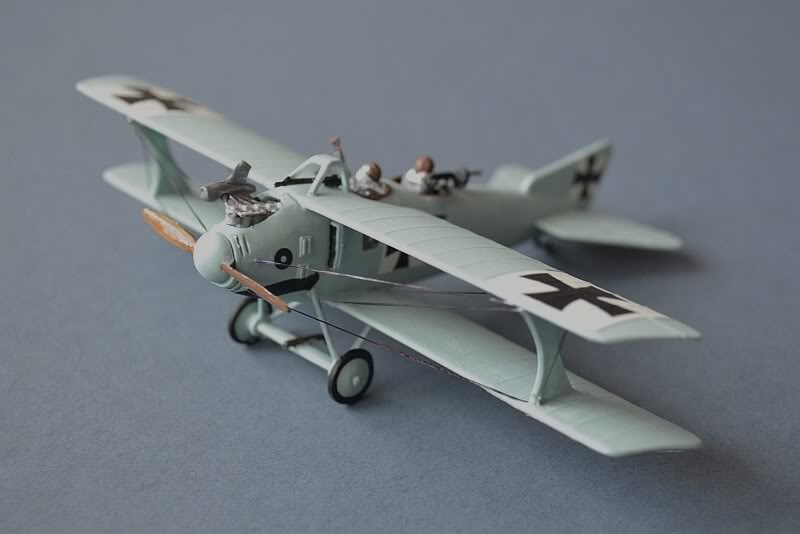
I first built one of these back in the 1970s, unpainted, in a mass of glue and fingerprints. It was a real thrill to apply my more developed modelling skills to this nicely detailed little kit, with its trademark Airfix light-blue plastic. Although the Airfix kit bears a rather plain colour scheme (which is easily covered with light blue!!!!), it allows the sleek and elegant fish-like lines of this aircraft to be clearly seen and the two supplied figures are very nicely done.
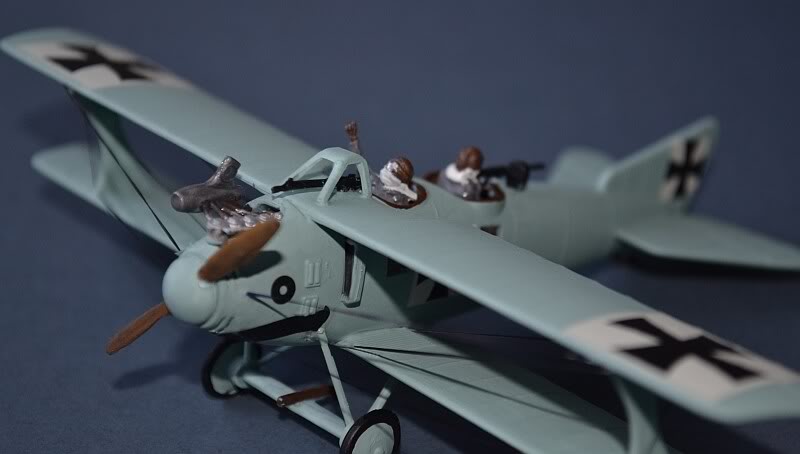

More enemy aircraft on the Adversaries pages
Background Picture - the RN Heritage Flight Swordfish is prepared for flight.
Link to previous month Link to Next Month
www.gengriz.co.uk
